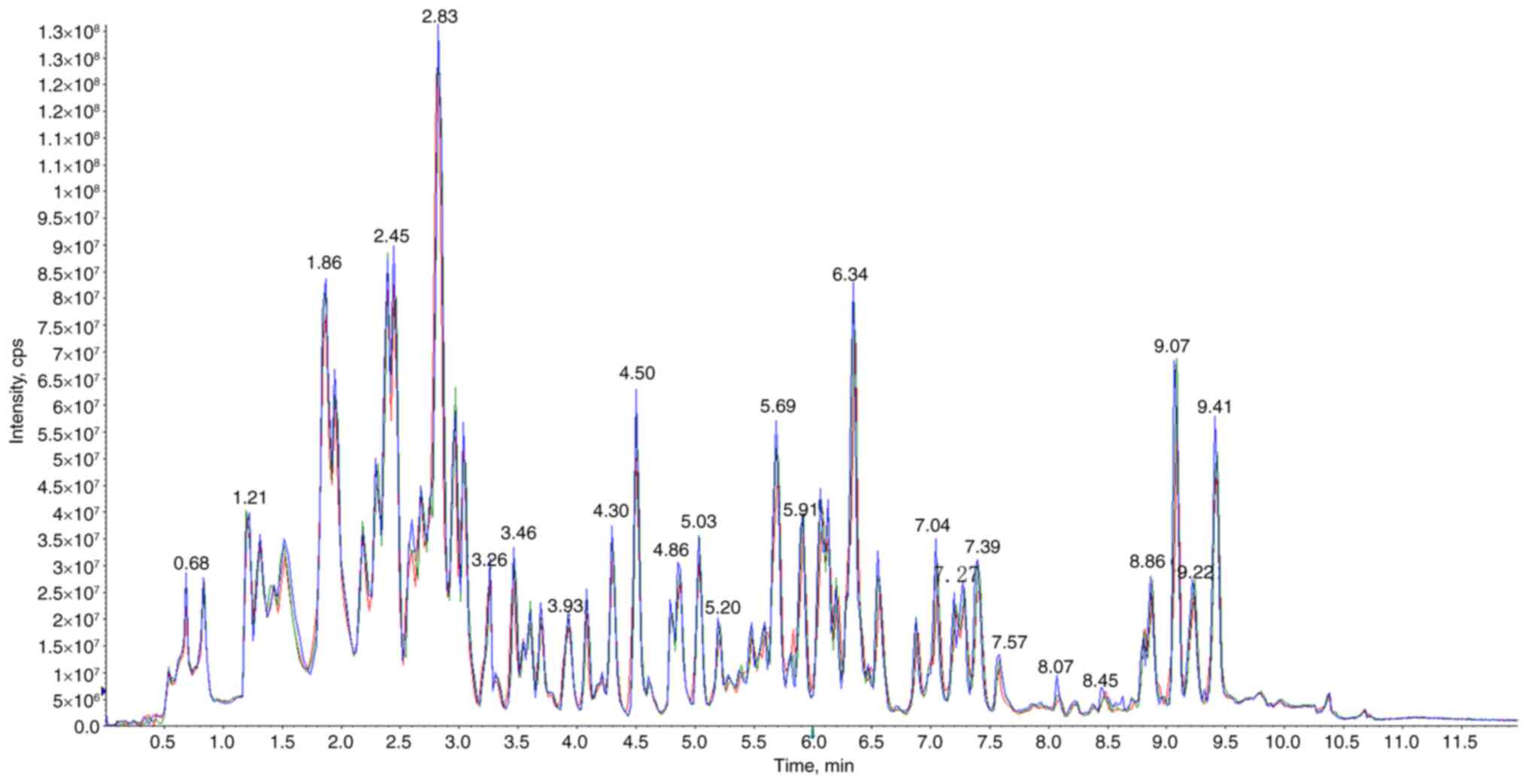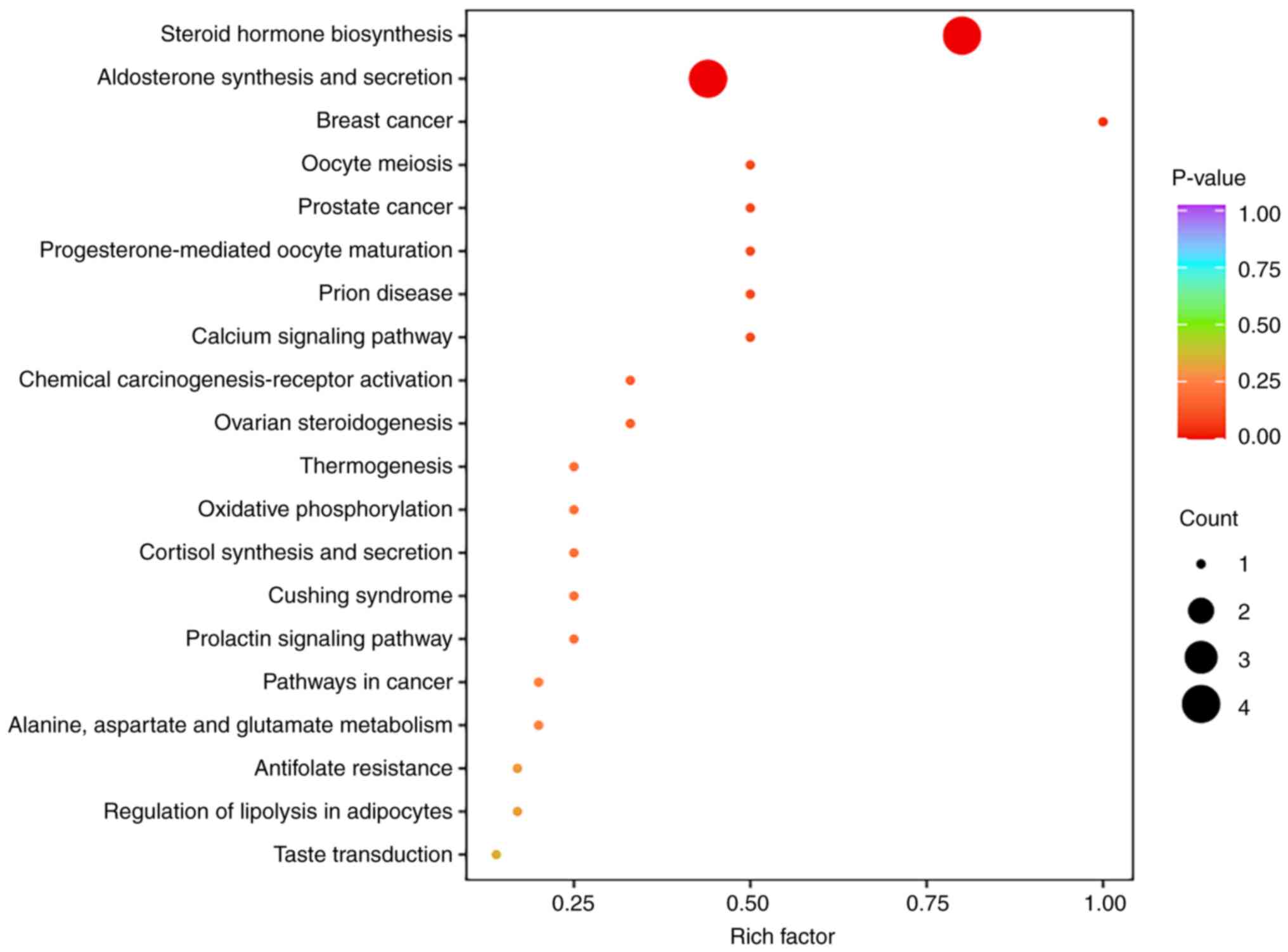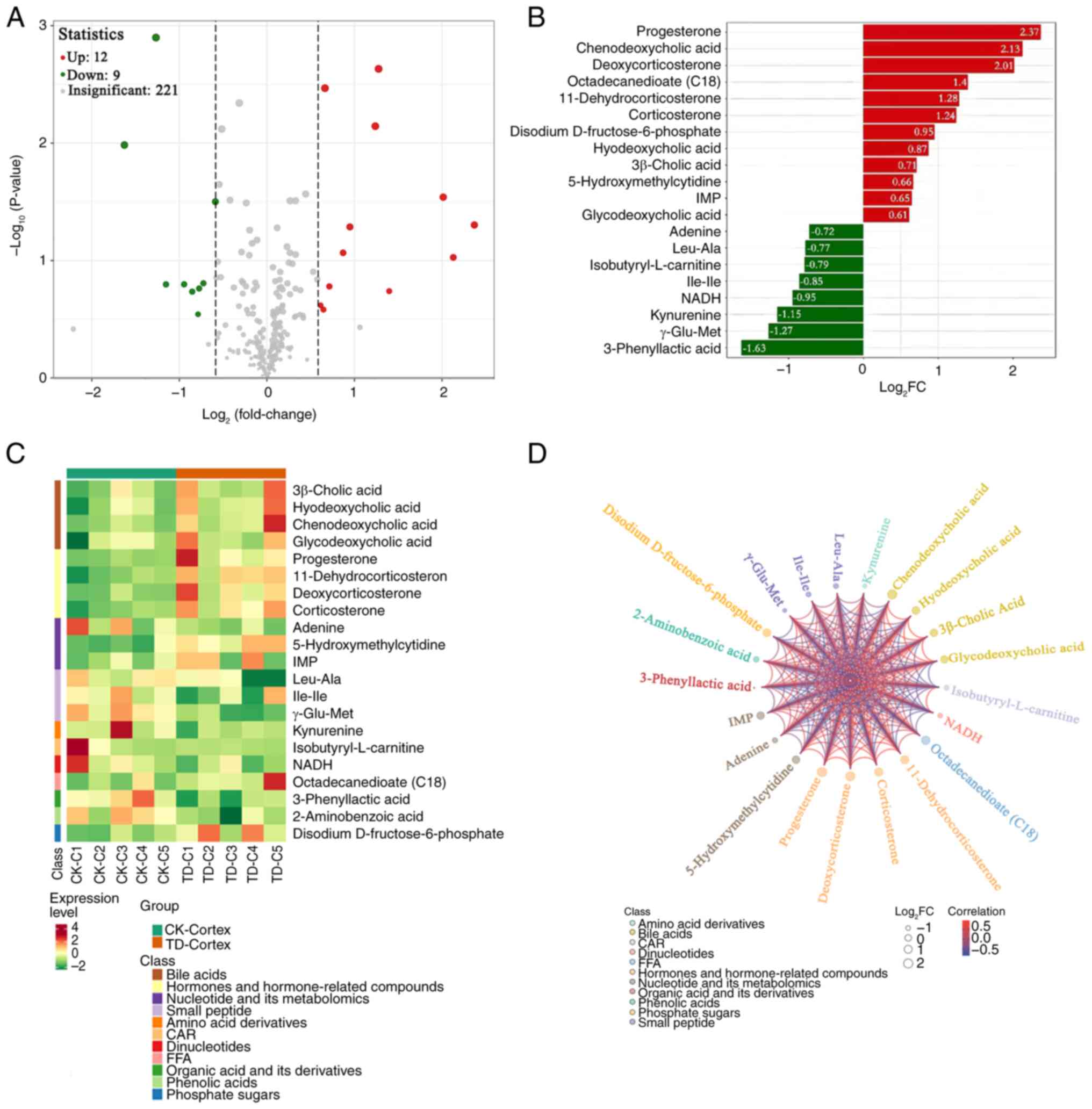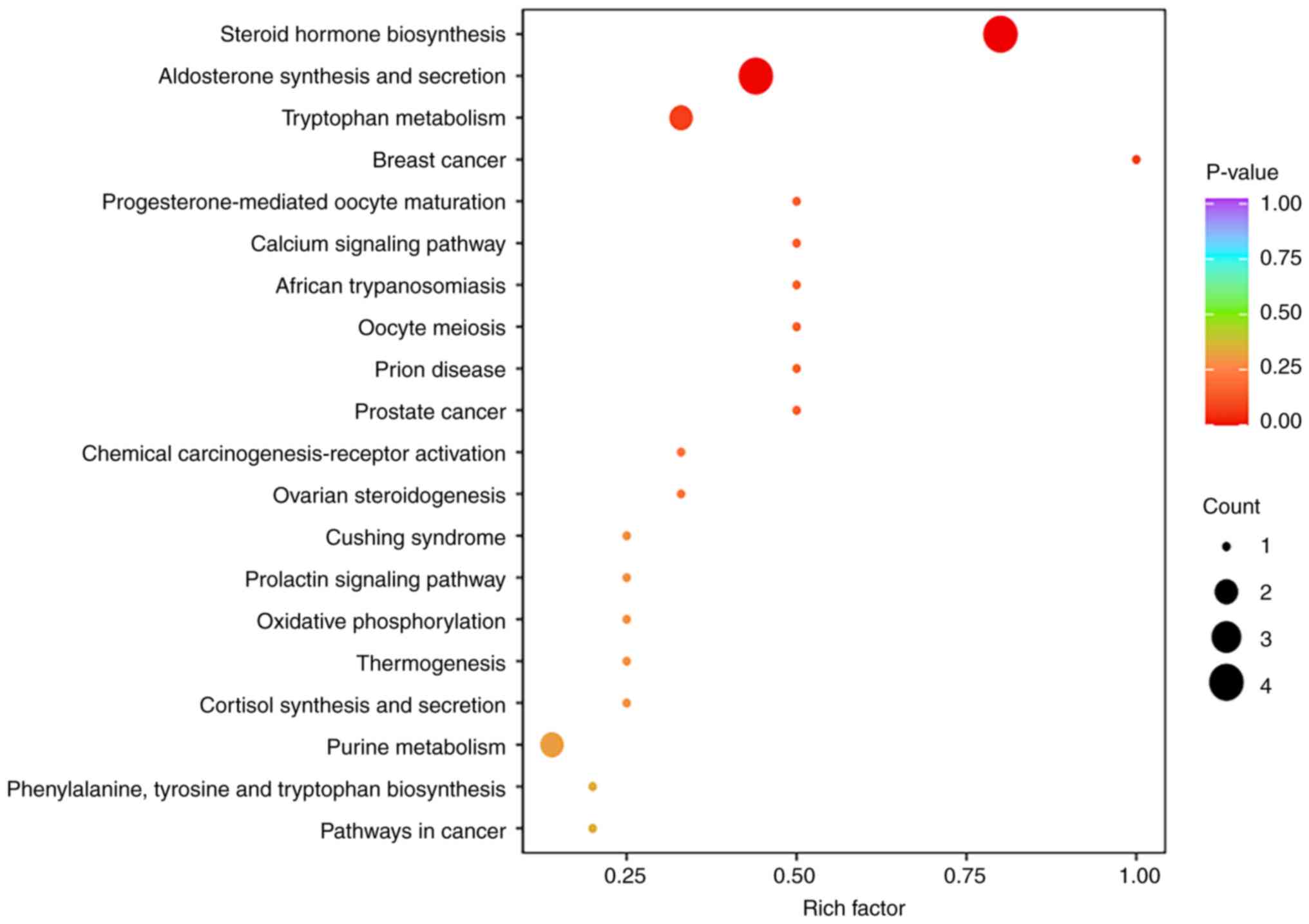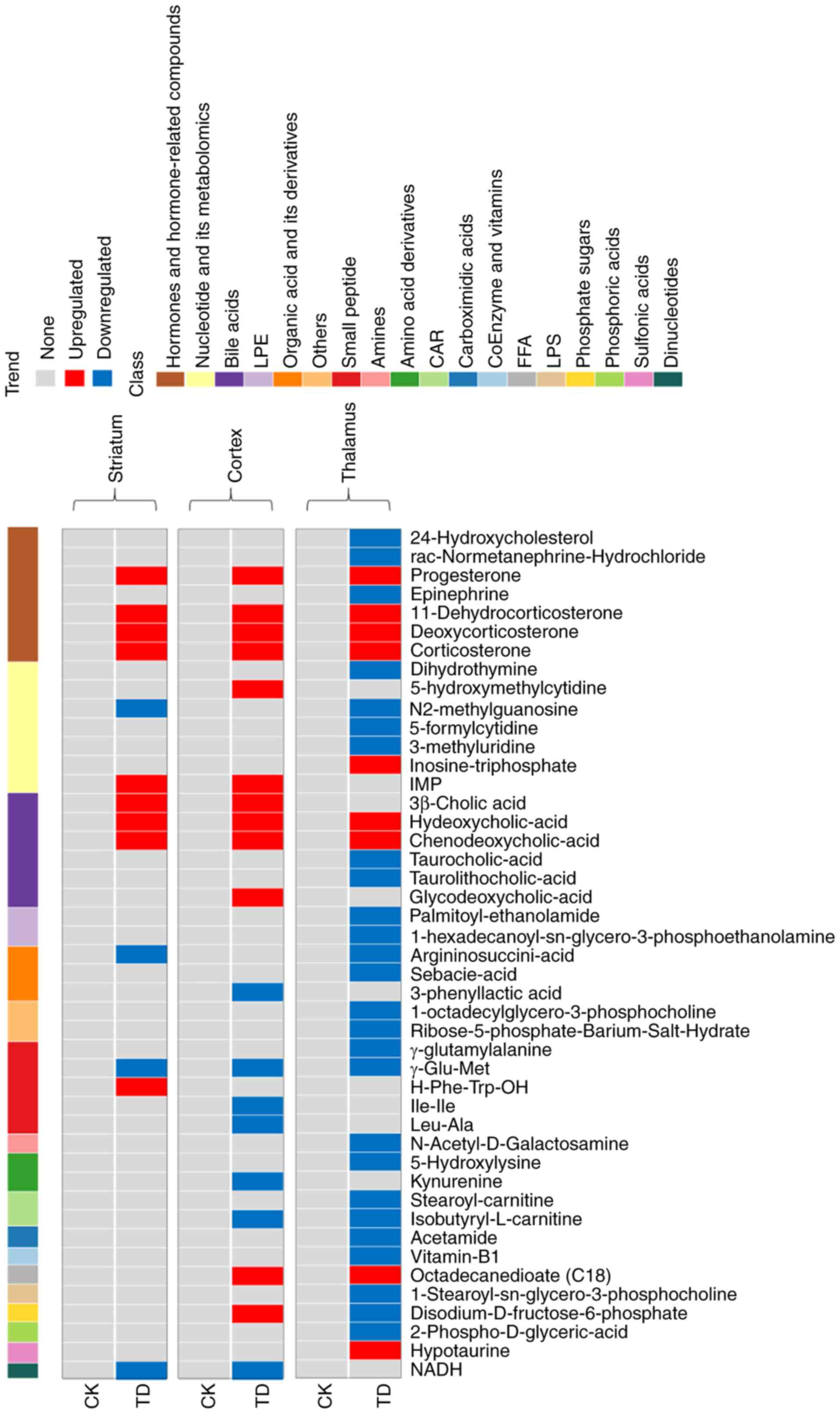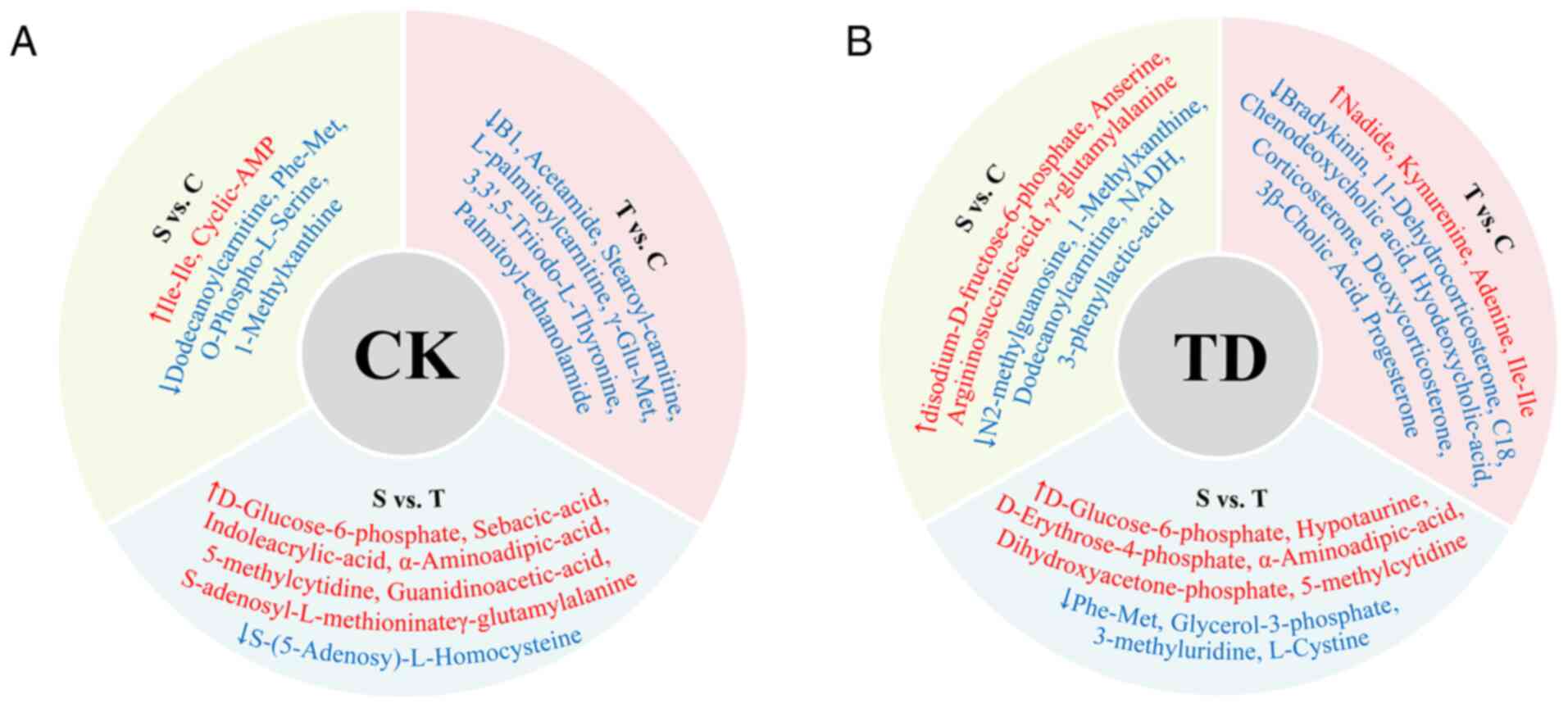|
1
|
Greene DJ, Koller JM, Robichaux-Viehoever
A, Bihun EC, Schlaggar BL and Black KJ: Reward enhances tic
suppression in children within months of tic disorder onset. Dev
Cogn Neurosci. 11:65–74. 2015. View Article : Google Scholar : PubMed/NCBI
|
|
2
|
Liu S, Tian M, He F, Li J, Xie H, Liu W,
Zhang Y, Zhang R, Yi M, Che F, et al: Mutations in ASH1L confer
susceptibility to Tourette syndrome. Mol Psychiatry. 25:476–490.
2020. View Article : Google Scholar : PubMed/NCBI
|
|
3
|
Atkinson-Clement C, Porte CA, de Liege A,
Delorme C, Beranger B, Valabregue R, Gallea C, Robbins TW, Hartmann
A and Worbe Y: Impulsive prepotent actions and tics in Tourette
disorder underpinned by a common neural network. Mol Psychiatry.
26:3548–3557. 2021. View Article : Google Scholar : PubMed/NCBI
|
|
4
|
Ricketts EJ, Woods DW, Espil FM, McGuire
JF, Stiede JT, Schild J, Yadegar M, Bennett SM, Specht MW, Chang S,
et al: Childhood predictors of long-term tic severity and tic
impairment in Tourette's disorder. Behav Ther. 53:1250–1264. 2022.
View Article : Google Scholar : PubMed/NCBI
|
|
5
|
Hirschtritt ME, Lee PC, Pauls DL, Dion Y,
Grados MA, Illmann C, King RA, Sandor P, McMahon WM, Lyon GJ, et
al: Lifetime prevalence, age of risk, and genetic relationships of
comorbid psychiatric disorders in Tourette syndrome. JAMA
Psychiatry. 72:325–333. 2015. View Article : Google Scholar : PubMed/NCBI
|
|
6
|
Mataix-Cols D, Frans E, Pérez-Vigil A,
Kuja-Halkola R, Gromark C, Isomura K, Fernández de la Cruz L,
Serlachius E, Leckman JF, Crowley JJ, et al: A total-population
multigenerational family clustering study of autoimmune diseases in
obsessive-compulsive disorder and Tourette's/chronic tic disorders.
Mol Psychiatry. 23:1652–1658. 2018. View Article : Google Scholar : PubMed/NCBI
|
|
7
|
Huang J, Li R, Li L, Song Y and Jin L: The
relationship between allergic diseases and tic disorders: A
systematic review and meta-analysis. Neurosci Biobehav Rev.
132:362–377. 2022. View Article : Google Scholar : PubMed/NCBI
|
|
8
|
Keenan L, Sherlock C, Bramham J and Downes
M: Overlapping sleep disturbances in persistent tic disorders and
attention-deficit hyperactivity disorder: A systematic review and
meta-analysis of polysomnographic findings. Neurosci Biobehav Rev.
126:194–212. 2021. View Article : Google Scholar : PubMed/NCBI
|
|
9
|
Cavanna AE, Schrag A, Morley D, Orth M,
Robertson MM, Joyce E, Critchley HD and Selai C: The Gilles de la
Tourette syndrome-quality of life scale (GTS-QOL): Development and
validation. Neurology. 71:1410–1416. 2008. View Article : Google Scholar : PubMed/NCBI
|
|
10
|
Vermilion J, Augustine E, Adams HR,
Vierhile A, Lewin AB, Thatcher A, McDermott MP, O'Connor T, Kurlan
R, van Wijngaarden E, et al: Tic disorders are associated with
lower child and parent quality of life and worse family
functioning. Pediatr Neurol. 105:48–54. 2020. View Article : Google Scholar : PubMed/NCBI
|
|
11
|
Gorman DA, Thompson N, Plessen KJ,
Robertson MM, Leckman JF and Peterson BS: Psychosocial outcome and
psychiatric comorbidity in older adolescents with Tourette
syndrome: Controlled study. Br J Psychiatry. 197:36–44. 2010.
View Article : Google Scholar : PubMed/NCBI
|
|
12
|
van den Heuvel OA, van Wingen G,
Soriano-Mas C, Alonso P, Chamberlain SR, Nakamae T, Denys D,
Goudriaan AE and Veltman DJ: Brain circuitry of compulsivity. Eur
Neuropsychopharmacol. 26:810–827. 2016. View Article : Google Scholar : PubMed/NCBI
|
|
13
|
Naro A, Billeri L, Colucci VP, Le Cause M,
De Domenico C, Ciatto L, Bramanti P, Bramanti A and Calabrò RS:
Brain functional connectivity in chronic tic disorders and Gilles
de la Tourette syndrome. Prog Neurobiol. 194:1018842020. View Article : Google Scholar : PubMed/NCBI
|
|
14
|
Rusheen AE, Rojas-Cabrera J, Goyal A, Shin
H, Yuen J, Jang DP, Bennet KE, Blaha CD, Lee KH and Oh Y: Deep
brain stimulation alleviates tics in Tourette syndrome via striatal
dopamine transmission. Brain. 146:4174–4190. 2023. View Article : Google Scholar : PubMed/NCBI
|
|
15
|
Yu J, Yao X, Zhang X and Hao J: New
insights of metabolite abnormalities in the thalamus of rats with
iminodiproprionitrile-induced tic disorders. Front Neurosci.
17:12012942023. View Article : Google Scholar : PubMed/NCBI
|
|
16
|
Nordstrom EJ, Bittner KC, McGrath MJ,
Parks CR III and Burton FH: ‘Hyperglutamatergic
cortico-striato-thalamo-cortical circuit’ breaker drugs alleviate
tics in a transgenic circuit model of Tourette's syndrome. Brain
Res. 1629:38–53. 2015. View Article : Google Scholar : PubMed/NCBI
|
|
17
|
Pogorelov V, Xu M, Smith HR, Buchanan GF
and Pittenger C: Corticostriatal interactions in the generation of
tic-like behaviors after local striatal disinhibition. Exp Neurol.
265:122–128. 2015. View Article : Google Scholar : PubMed/NCBI
|
|
18
|
He JL, Mikkelsen M, Huddleston DA,
Crocetti D, Cecil KM, Singer HS, Edden RAE, Gilbert DL, Mostofsky
SH and Puts NAJ: Frequency and intensity of premonitory
Urges-to-Tic in Tourette syndrome is associated with supplementary
motor area GABA+ levels. Mov Disord. 37:563–573. 2022. View Article : Google Scholar : PubMed/NCBI
|
|
19
|
Larsh TR, Huddleston DA, Horn PS, Wu SW,
Cecil KM, Jackson HS, Edden RAE, Mostofsky SH and Gilbert DL: From
urges to tics in children with Tourette syndrome: Associations with
supplementary motor area GABA and right motor cortex physiology.
Cereb Cortex. 33:3922–3933. 2023. View Article : Google Scholar : PubMed/NCBI
|
|
20
|
Butler IJ, Koslow SH, Seifert WE Jr,
Caprioli RM and Singer HS: Biogenic amine metabolism in Tourette
syndrome. Ann Neurol. 6:37–39. 1979. View Article : Google Scholar : PubMed/NCBI
|
|
21
|
Behen M, Chugani HT, Juhász C, Helder E,
Ho A, Maqbool M, Rothermel RD, Perry J and Muzik O: Abnormal brain
tryptophan metabolism and clinical correlates in Tourette syndrome.
Mov Disord. 22:2256–2262. 2007. View Article : Google Scholar : PubMed/NCBI
|
|
22
|
Zheng P, Li E, Wang J, Cui X and Wang L:
Involvement of tryptophan hydroxylase 2 gene polymorphisms in
susceptibility to tic disorder in Chinese Han population. Behav
Brain Funct. 9:62013. View Article : Google Scholar : PubMed/NCBI
|
|
23
|
Johnson CH, Ivanisevic J and Siuzdak G:
Metabolomics: Beyond biomarkers and towards mechanisms. Nat Rev Mol
Cell Biol. 17:451–459. 2016. View Article : Google Scholar : PubMed/NCBI
|
|
24
|
Chen Q, Shi J, Mu B, Chen Z, Dai W and Lin
Z: Metabolomics combined with proteomics provides a novel
interpretation of the changes in nonvolatile compounds during white
tea processing. Food Chem. 332:1274122020. View Article : Google Scholar : PubMed/NCBI
|
|
25
|
Sun R, Fei F, Jin D, Yang H, Xu Z, Cao B
and Li J: The integrated analysis of gut microbiota and metabolome
revealed steroid hormone biosynthesis is a critical pathway in
liver regeneration after 2/3 partial hepatectomy. Front Pharmacol.
15:14074012024. View Article : Google Scholar : PubMed/NCBI
|
|
26
|
Cadet JL: The iminodipropionitrile
(IDPN)-induced dyskinetic syndrome: Behavioral and biochemical
pharmacology. Neurosci Biobehav Rev. 13:39–45. 1989. View Article : Google Scholar : PubMed/NCBI
|
|
27
|
Brownlow EK and Heath H: Biochemical
changes in beta, beta'-iminodipropionitrile-treated rat brain and
prevention of toxicity by ethionine. J Neurochem. 16:567–575. 1969.
View Article : Google Scholar : PubMed/NCBI
|
|
28
|
Williams S, Brownlow EK and Heath H:
Studies on the metabolism of, ‘-iminodipropionitrile in the rat.
Biochem Pharmacol. 19:2277–2287. 1970. View Article : Google Scholar : PubMed/NCBI
|
|
29
|
Diamond BI, Reyes MG and Borison R: A new
animal model for Tourette syndrome. Adv Neurol. 35:221–225.
1982.PubMed/NCBI
|
|
30
|
Zhang F and Li A: Dual ameliorative
effects of Ningdong granule on dopamine in rat models of Tourette's
syndrome. Sci Rep. 5:77312015. View Article : Google Scholar : PubMed/NCBI
|
|
31
|
Fan S, Cath DC, van den Heuvel OA, van der
Werf YD, Schöls C, Veltman DJ and Pouwels P: Abnormalities in
metabolite concentrations in tourette's disorder and
obsessive-compulsive disorder-A proton magnetic resonance
spectroscopy study. Psychoneuroendocrinology. 77:211–217. 2017.
View Article : Google Scholar : PubMed/NCBI
|
|
32
|
Chowdhury GM, Patel AB, Mason GF, Rothman
DL and Behar KL: Glutamatergic and GABAergic neurotransmitter
cycling and energy metabolism in rat cerebral cortex during
postnatal development. J Cereb Blood Flow Metab. 27:1895–1907.
2007. View Article : Google Scholar : PubMed/NCBI
|
|
33
|
Garcia-Delgar B, Servera M, Coffey BJ,
Lázaro L, Openneer T, Benaroya-Milshtein N, Steinberg T, Hoekstra
PJ, Dietrich A and Morer A; EMTICS collaborative group, : Tic
disorders in children and adolescents: Does the clinical
presentation differ in males and females? A report by the EMTICS
group. Eur Child Adolesc Psychiatry. 31:1539–1548. 2022. View Article : Google Scholar : PubMed/NCBI
|
|
34
|
Caruso D, Pesaresi M, Abbiati F, Calabrese
D, Giatti S, Garcia-Segura LM and Melcangi RC: Comparison of plasma
and cerebrospinal fluid levels of neuroactive steroids with their
brain, spinal cord and peripheral nerve levels in male and female
rats. Psychoneuroendocrinology. 38:2278–2290. 2013. View Article : Google Scholar : PubMed/NCBI
|
|
35
|
Mohr MA, Wong AM, Tomm RJ, Soma KK and
Micevych PE: Pubertal development of estradiol-induced hypothalamic
progesterone synthesis. Horm Behav. 111:110–113. 2019. View Article : Google Scholar : PubMed/NCBI
|
|
36
|
Cabrera RJ and Navarro CE: Progesterone in
vitro increases NMDA-evoked [3H] dopamine release from striatal
slices in proestrus rats. Neuropharmacology. 35:175–178. 1996.
View Article : Google Scholar : PubMed/NCBI
|
|
37
|
Bali N, Arimoto JM, Morgan TE and Finch
CE: Progesterone antagonism of neurite outgrowth depends on
microglial activation via Pgrmc1/S2R. Endocrinology. 154:2468–2480.
2013. View Article : Google Scholar : PubMed/NCBI
|
|
38
|
Israelashvili M, Yael D, Vinner E,
Belelovsky K and Bar-Gad I: Common neuronal mechanisms underlying
tics and hyperactivity. Cortex. 127:231–247. 2020. View Article : Google Scholar : PubMed/NCBI
|
|
39
|
Kanaan AS, Gerasch S, García-García I,
Lampe L, Pampel A, Anwander A, Near J, Möller HE and Müller-Vahl K:
Pathological glutamatergic neurotransmission in Gilles de la
Tourette syndrome. Brain. 140:218–234. 2017. View Article : Google Scholar : PubMed/NCBI
|
|
40
|
Wotton CA, Quon EF, Palmer AC and Bekar
LK: Corticosterone and serotonin similarly influence GABAergic and
purinergic pathways to affect cortical inhibitory networks. J
Neuroendocrinol. 30:e125922018. View Article : Google Scholar : PubMed/NCBI
|
|
41
|
Travers S, Bouvattier C, Fagart J,
Martinerie L, Viengchareun S, Pussard E and Lombès M: Interaction
between accumulated 21-deoxysteroids and mineralocorticoid
signaling in 21-hydroxylase deficiency. Am J Physiol Endocrinol
Metab. 318:E102–E110. 2020. View Article : Google Scholar : PubMed/NCBI
|
|
42
|
Sato M, Sugiyama K, Maeda N, Fujiki J,
Ieko T, Kawamura Y, Iwano H, Mukai K and Yokota H: Local
biosynthesis of corticosterone in rat skeletal muscle. J Steroid
Biochem Mol Biol. 201:1056932020. View Article : Google Scholar : PubMed/NCBI
|
|
43
|
Verma M, Sooy K, Just G, Nixon M, Morgan
R, Andrew R, Chapman KE and Homer NZM: Quantitative analysis of
11-dehydrocorticosterone and corticosterone for preclinical studies
by liquid chromatography/triple quadrupole mass spectrometry. Rapid
Commun Mass Spectrom. 34 (Suppl 4):e86102020. View Article : Google Scholar : PubMed/NCBI
|
|
44
|
Ruhrman D, Mikulincer M, Apter A,
Benaroya-Milshtein N and Steinberg T: Emotion regulation and tic
disorders in children. Eur Child Adolesc Psychiatry. 32:893–902.
2023. View Article : Google Scholar : PubMed/NCBI
|
|
45
|
Rodrigues D and Monteiro P: Chronic stress
promotes basal ganglia disinhibition by increasing the excitatory
drive of direct-pathway neurons. Neurobiol Stress. 27:1005712023.
View Article : Google Scholar : PubMed/NCBI
|
|
46
|
Gong S, Miao YL, Jiao GZ, Sun MJ, Li H,
Lin J, Luo MJ and Tan JH: Dynamics and correlation of serum
cortisol and corticosterone under different physiological or
stressful conditions in mice. PLoS One. 10:e01175032015. View Article : Google Scholar : PubMed/NCBI
|
|
47
|
Rajcani J, Vytykacova S, Solarikova P and
Brezina I: Stress and hair cortisol concentrations in nurses during
the first wave of the COVID-19 pandemic. Psychoneuroendocrinology.
129:1052452021. View Article : Google Scholar : PubMed/NCBI
|
|
48
|
Corbett BA, Mendoza SP, Baym CL, Bunge SA
and Levine S: Examining cortisol rhythmicity and responsivity to
stress in children with Tourette syndrome.
Psychoneuroendocrinology. 33:810–820. 2008. View Article : Google Scholar : PubMed/NCBI
|
|
49
|
Rothe J, Buse J, Uhlmann A, Bodmer B,
Kirschbaum C, Hoekstra PJ, Dietrich A and Roessner V; EMTICS
Collaborative Group, : Hair cortisol and perceived
Stress-predictors for the onset of tics? A european longitudinal
study on High-Risk children. Biomedicines. 11:15612023. View Article : Google Scholar : PubMed/NCBI
|
|
50
|
Chong C, Hamid A, Yao T, Garza AE, Pojoga
LH, Adler GK, Romero JR and Williams GH: Regulation of aldosterone
secretion by mineralocorticoid receptor-mediated signaling. J
Endocrinol. 232:525–534. 2017. View Article : Google Scholar : PubMed/NCBI
|
|
51
|
Dolman D and Edmonds CJ: The effect of
aldosterone and the renin-angiotensin system on sodium, potassium
and chloride transport by proximal and distal rat colon in vivo. J
Physiol. 250:597–611. 1975. View Article : Google Scholar : PubMed/NCBI
|
|
52
|
McHale TS, Chee WC, Hodges-Simeon CR, Zava
DT, Albert G, Chan KC and Gray PB: Salivary aldosterone and
cortisone respond differently to high- and low-psychologically
stressful soccer competitions. J Sports Sci. 38:2688–2697. 2020.
View Article : Google Scholar : PubMed/NCBI
|
|
53
|
Quinn M, McMillin M, Galindo C, Frampton
G, Pae HY and DeMorrow S: Bile acids permeabilize the blood brain
barrier after bile duct ligation in rats via Rac1-dependent
mechanisms. Dig Liver Dis. 46:527–534. 2014. View Article : Google Scholar : PubMed/NCBI
|
|
54
|
Pan X, Elliott CT, McGuinness B, Passmore
P, Kehoe PG, Hölscher C, McClean PL, Graham SF and Green BD:
Metabolomic profiling of bile acids in clinical and experimental
samples of Alzheimer's disease. Metabolites. 7:282017. View Article : Google Scholar : PubMed/NCBI
|
|
55
|
Xiao Y, Yan W, Zhou K, Cao Y and Cai W:
Glucocorticoid treatment alters systemic bile acid homeostasis by
regulating the biosynthesis and transport of bile salts. Dig Liver
Dis. 48:771–779. 2016. View Article : Google Scholar : PubMed/NCBI
|
|
56
|
Chojnacki C, Błońska A, Konrad P,
Chojnacki M, Podogrocki M and Poplawski T: Changes in tryptophan
metabolism on serotonin and kynurenine pathways in patients with
irritable bowel syndrome. Nutrients. 15:12622023. View Article : Google Scholar : PubMed/NCBI
|
|
57
|
Badawy AA: Kynurenine pathway of
tryptophan metabolism: Regulatory and functional aspects. Int J
Tryptophan Res. 10:11786469176919382017. View Article : Google Scholar : PubMed/NCBI
|
|
58
|
Walczak K, Deneka-Hannemann S, Jarosz B,
Zgrajka W, Stoma F, Trojanowski T, Turski WA and Rzeski W:
Kynurenic acid inhibits proliferation and migration of human
glioblastoma T98G cells. Pharmacol Rep. 66:130–136. 2014.
View Article : Google Scholar : PubMed/NCBI
|
|
59
|
Gheorghe CE, Martin JA, Manriquez FV,
Dinan TG, Cryan JF and Clarke G: Focus on the essentials:
Tryptophan metabolism and the Microbiome-gut-brain axis. Curr Opin
Pharmacol. 48:137–145. 2019. View Article : Google Scholar : PubMed/NCBI
|
|
60
|
Cryan JF, O'Riordan KJ, Sandhu K, Peterson
V and Dinan TG: The gut microbiome in neurological disorders.
Lancet Neurol. 19:179–194. 2020. View Article : Google Scholar : PubMed/NCBI
|
|
61
|
Needham BD, Kaddurah-Daouk R and Mazmanian
SK: Gut microbial molecules in behavioural and neurodegenerative
conditions. Nat Rev Neurosci. 21:717–731. 2020. View Article : Google Scholar : PubMed/NCBI
|















